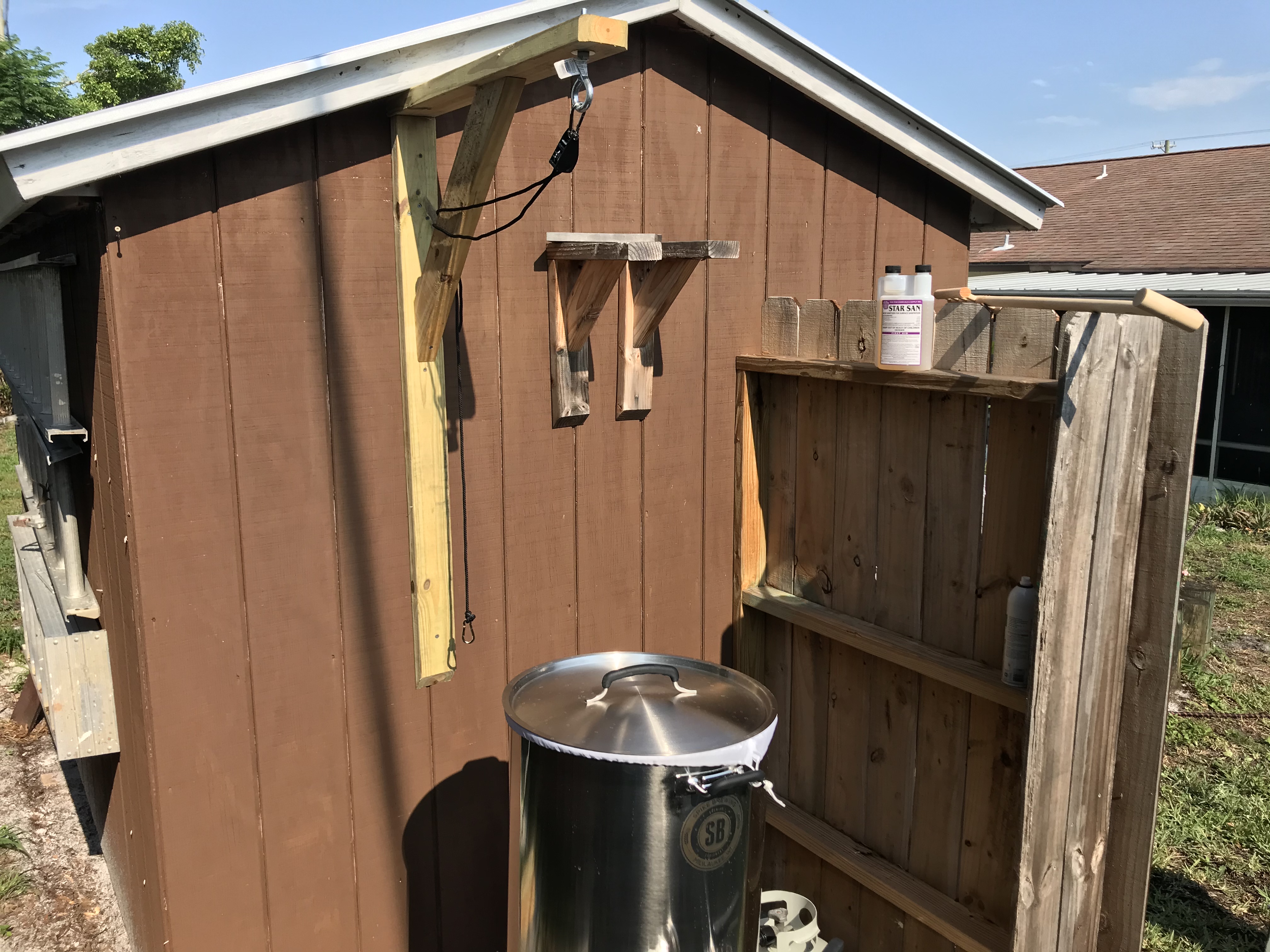KookyBrewsky
Well-Known Member
- Joined
- Feb 23, 2020
- Messages
- 363
- Reaction score
- 121
Thanks everyone for all the help with my extract batches. I’ve learned a lot and made some great beer so far. Great Lakes Pale Ale is a crowd favorite, does not taste like “extract”, patiently waiting for my American Pale Ale to finish bottle conditioning. I’ve updated my setup to be finalized at 10 gallon BIAB. I don’t think I’ll ever keg, I like to share my bottles with lots of people.
Right now I’m doing a 5.5 gallon Centennial Blonde from the recipe section here.
If you’ve any first BIAB day tips I’d love to hear them. We have a tiny house in the backyard, using a Wilser bag/pulley with a structure built onto the side, Spike+ 20 gallon kettle and a Hellfire Burner.
cheers


Right now I’m doing a 5.5 gallon Centennial Blonde from the recipe section here.
If you’ve any first BIAB day tips I’d love to hear them. We have a tiny house in the backyard, using a Wilser bag/pulley with a structure built onto the side, Spike+ 20 gallon kettle and a Hellfire Burner.
cheers






























![Craft A Brew - Safale S-04 Dry Yeast - Fermentis - English Ale Dry Yeast - For English and American Ales and Hard Apple Ciders - Ingredients for Home Brewing - Beer Making Supplies - [1 Pack]](https://m.media-amazon.com/images/I/41fVGNh6JfL._SL500_.jpg)





























